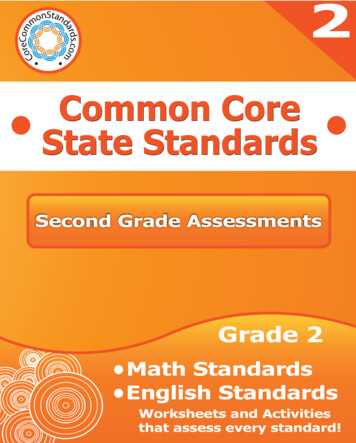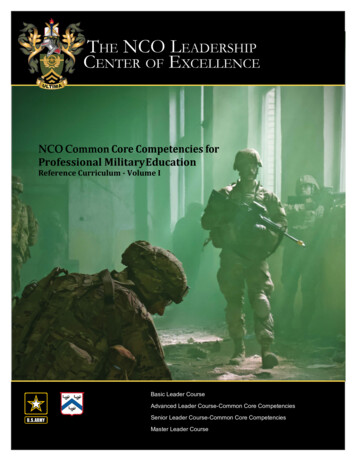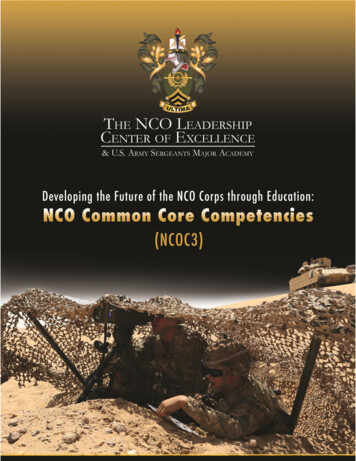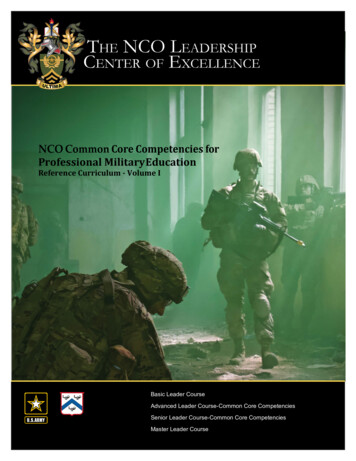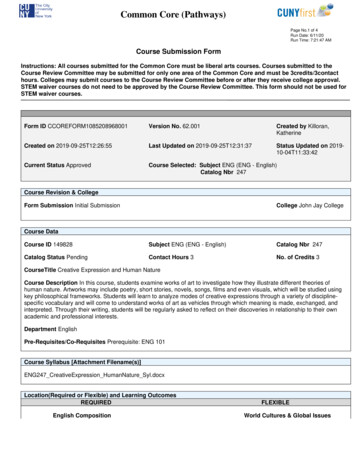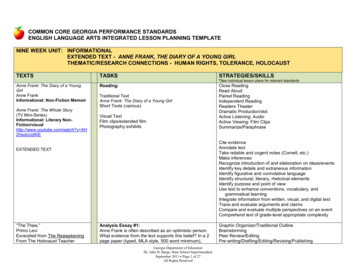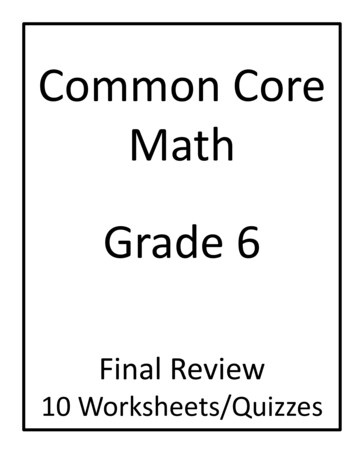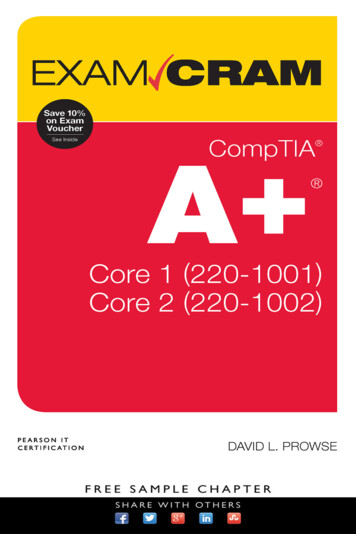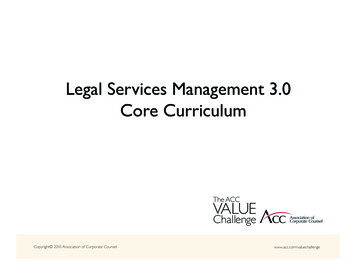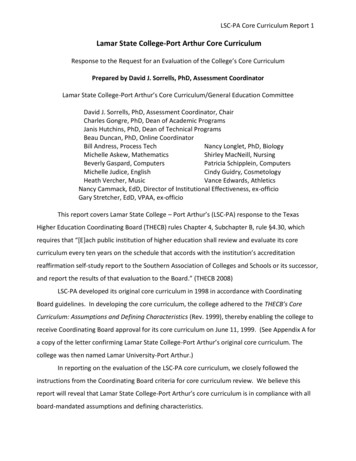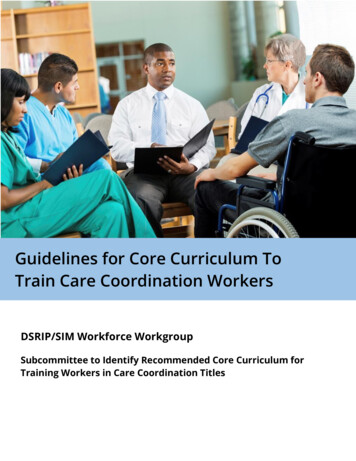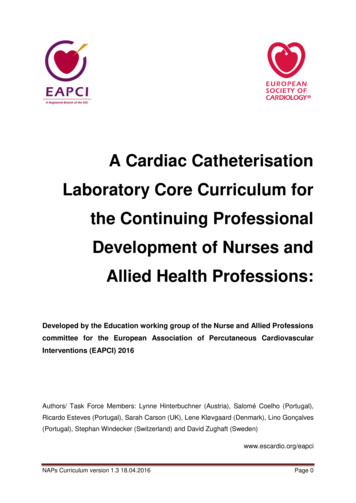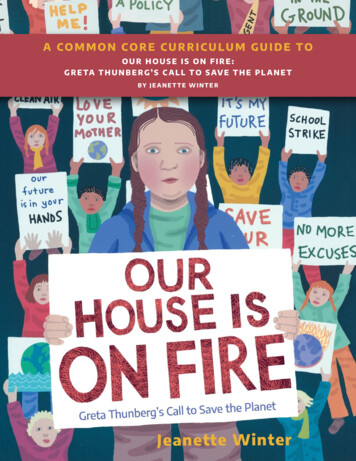
Transcription
A COMMON CORE CURRICULUM GUIDE TOOUR HOUSE IS ON FIRE:G R E TA T H U N B E R G ’ S C A L L T O S AV E T H E P L A N E TBY JEANETTE WINTER
HC: 9781534467781 EB: 9781534467798 GRADES P–3 AGES 3–8ABOUT THE BOOKGreta Thunberg is a sixteen-year-old Swedish activist who speaks passionately about the dangers of climate change.She has spoken at the World Economic Forum in Davos, Switzerland, and sparked a worldwide children’s march.She recently arrived in New York, where she is scheduled to speak at the United Nations Climate Action Summit.Greta wasn’t always this visible, and Jeanette Winter’s book Our House Is on Fire shows how she changed from a girlwho considered herself invisible to an outspoken advocate for action. What caused this quiet girl to change?When her teacher discussed the problem of climate change in class, Greta decided to learn more—a lot more. Byreading many books and watching films, she learned about things like sea ice melting in the Arctic, coral reefsbeing destroyed by warming waters, animals becoming endangered, floodwaters covering houses, and forest firesraging. The girl who had been invisible became a strong voice for change. Beginning with strikes each Friday at theSwedish Parliament building, she spoke out about climate change. Other strikers eventually joined her, and not justin Sweden. She caught the attention of people around the world, showing that a young girl can speak up and makea difference. This is an inspiring story of one girl’s passion for change and her influence on people around the world.Jeanette Winter’s well-crafted prose and her detailed illustrations show how Greta Thunberg developed her strongconvictions and her need to speak up and act. Quotes from Thunberg and an important question raised by theauthor add to the note of urgency.—2—
DISCUSSION QUESTIONS AND ACTIVITIESK E Y I D E A S & D E TA I L SThe discussion questions and activities below draw on Common Core State Standards for reading informational text(RI) that ask children to ask and answer questions about key details in a text (RI.K–3.1), identify the main topic andkey details that support it (RI.K–3.2), and describe the relationship between a series of events, ideas, or steps in aprocess (RI.K–3.3).1. What does Greta think about climate change? What did you think about it before reading the book, and howdo you feel now?2. What caused Greta to change from feeling invisible at school to speaking up about climate change? Discussthe impact of the following: Her teacher What she read What she saw when she watched films3. Explain what Greta means when she says, “Our house is on fire.” Do you agree with her? What kinds of feelingsor actions does this statement provoke?4. Do you think it was a good idea to start a school strike to bring awareness to climate change? Do you think itwas successful? How do you know?5. Activity 1: Responding to Quotes. See page 4.—3—
AC TI V IT Y 1 : R E S PON DI NG TO QUOTE SThe author includes quotes from Greta so that she can speak for herself.Share your thoughts and feelings about each quote on the lines below.MY THOUGHTS:“You are never too smallto make a difference.”MY THOUGHTS:“You say you love your children aboveall else, and yet you are stealing theirfuture in front of their very eyes.”MY THOUGHTS:“We need to keep the fossil fuelsin the ground.”MY THOUGHTS:“I don’t want you to be hopeful. I wantyou to panic. I want you to feel the fearI feel every day I want you to act as ifthe house was on fire. Because it is.”—4—
CRAFT AND STRUCTURETo learn about craft and structure, the Common Core State Standards ask us to help students learn and understandvocabulary words and phrases (RI.K–3.4), think about the features of nonfiction text (RI.K–3.5), and assess theauthor’s point of view (RI.K–3.6). The questions and activities below emphasize these understandings.1. Looking Closely at the Features of Nonfiction. Looking at the Words: The author repeats the words she saw and Greta saw to emphasize the number of thingsGreta learns about climate change. Read the sentences below to see how the author does this, and then answer thequestion that follows:“She saw ice melting into the sea, disappearing.She saw mighty winds and torrential rainshowling across the land.She saw coral reefs, deep down in the sea, pale as ghosts,bleached by the warming waters.Greta saw living creatures everywhere,struggling to stay alive.Greta saw floodwaters covering housesand people and animals.She saw cities swallowed under rising oceans.She saw the smoldering sun scorch the earth,leaving it bone-dry.She saw blazing wildfires racing through the forests.” Discuss the Following Question: How does the repetition of she saw and Greta saw help you understand why Gretadecided she had to do something?2. Activity 2: Looking at Illustrations. See page 6.3. Using Large Print to Pose Questions. Very largeprint is used to raise questions for readers tothink about. Greta asks, “CAN YOU HEAR US?”The author asks, “WHAT WILL YOU DO?”Discuss your answers to these two questions.4. Activity 3: Interesting Sentences. See page 7.5. What does the author think about Greta’s call to save the planet? How do you know? At the very end of thebook, the author writes, “When I heard her speeches, I felt Greta was speaking for me. And I’m eighty yearsold.” Do you feel that Greta is speaking for you? Explain your answer.—5—
AC TI V IT Y 2 : LOOK I NG AT I LLU STR ATI ON SLook at the words and illustrations below, and then answer the question that follows.“She saw coral reefs, deep down in the sea,pale as ghosts, bleached by the warming waters.”“Greta saw living creatures everywhere,struggling to stay alive.”What additional information is included in the illustrations but not in the words showing what Greta saw?Notice the colors the illustrator uses and think about where Greta is placed in the illustration.How does the illustrator use color to show us that Greta went from feeling invisible to being visible?What do you notice about where Greta is placed in the illustration?Are children in front of her or behind her? What does that tell you?—6—
AC TI V IT Y 3 : I NTE R E STI NG S E NTE NC E SIn each of the sentences below, the author uses interesting word choices to discuss climate change.Examine each sentence carefully and then write down what you notice about the author’s word choices.“She saw coral reefs, deep down in the sea, pale as ghosts ”W H AT I N O T I C E :“She saw cities swallowed under rising oceans.”W H AT I N O T I C E :“She saw the smoldering sun scorch the earth, leaving it bone-dry.”W H AT I N O T I C E :“She saw blazing wildfires racing through the forests.”W H AT I N O T I C E :“Her quiet voice, joined by thousands of voices, became a roar.”W H AT I N O T I C E :—7—
WRITINGThe Common Core State Standards emphasize writing informative and explanatory text in the early grades. Thewriting activities below provide experience writing to give an opinion (W.K–3.1), to inform (W.K–3.2), and toexplain a sequence of events (W.K–3.3).1. Activity 4: Make your own sign. See page 9.2. What do you think about Greta’s urgent message? Is she right to say older generations are “stealing” children’sfutures, and that people should feel panic and fear? Write a paragraph or two with your thoughts.3. Imagine you could spend a day with Greta. What would you see, hear, and do? Describe and illustrate the day’sevents. What would come first, second, and third?4. Answer the BIG question in the book, “WHAT WILL YOU DO?” in more detail. How can you make othersaware of the problem of climate change? What steps can you take in your own life?5. Look carefully at the illustration below, which shows children protesting. Then write about the photo. Hereare some ideas for writing: What do you think the kids would say if they were asked why they were protesting? What do you think Greta would say to the protestors? Write a description of the scene. Think about the group’s energy and how long kids may have been standing there.What are they trying to accomplish? Imagine that you are in the illustration. Tell what is happening.—8—
AC TI V IT Y 4 : MA K E YOU R OWN S IGNMake your own sign. Imagine that you could join the children shown in the illustration on the front and back overof the book and inside the book. Design a sign you would like to hold up. Follow these steps: First, read the signs on the book cover and inside the book. What do you notice about them? List your findings. Hereare some examples to get you started:o Signs have limited text, usually between two and five words.o Some signs tell what people should do. Others tell what not to do. Second, decide what you want to say about climate change. Third, make an original sign. Use color to emphasize important words.—9—
EXTENDING THE EXPERIENCE OF READING THE BOOK1. Watch videos of Greta Thunberg: Greta Thunberg: The Disarming Case to Act Right Now on Climate Change. Watch Greta’s TED talk in which sheexplains why it is important to act right now. Greta Thunberg’s Speech at the UN Climate Change Conference. Watch Greta at the 2018 UN Climate ChangeConference. Greta Thunberg’s Emotional Speech to EU Leaders. Listen to Greta’s emotional speech in which she explains that“our house is on fire.” Hundreds of Young People Join Greta Thunberg in Climate Change Protest. Watch the crowd of young peopleoutside the UN. Greta and Svante Thunberg—Straight Talk. Watch Greta and her father discuss climate change.2. Read other books by Jeanette Winter: Nasreen’s Secret School: A True Story from Afghanistan Biblioburro: A True Story from Colombia Henri’s Scissors Malala: A Brave Girl From Pakistan and Iqbal: A Brave Boy from Pakistan Mr. Cornell’s Dream Boxes Nanuk the Ice Bear The World Is Not a Rectangle: A Portrait of Architect Zaha Hadid The Secret Project (written by Jonah Winter, illustrated by Jeanette Winter) Oil (written by Jonah Winter, illustrated by Jeanette Winter) Sisters: Venus and Serena Williams3. Read other books about climate change Hopping Ahead of Climate Change: Showshoe Hares, Science, and Survival by Sneed B. Collard III Out of the Ice: How Climate Change Is Revealing the Past by Claire Eamer The Brilliant Deep: Rebuilding the World’s Coral Reefs by Kate Messner Spring After Spring: How Rachel Carson Inspired the Environmental Movement by Stephanie Roth Sisson How Can We Reduce Fossil Fuel Pollution? by Andrea Wang If Polar Bears Disappeared by Lily WilliamsGuide written by Myra Zarnowski, a professor in the Department of Elementary and Early Childhood Education at Queens College, CUNY.This guide has been provided by Simon & Schuster for classroom, library, and reading group use. It may be reproduced in its entirety orexcerpted for these purposes.— 10 —
Nanuk the Ice Bear The World Is Not a Rectangle: A Portrait of Architect Zaha Hadid The Secret Project (written by Jonah Winter, illustrated by Jeanette Winter) Oil (written by Jonah Winter, illustrated by Jeanette Winter) Sisters: Venus and
